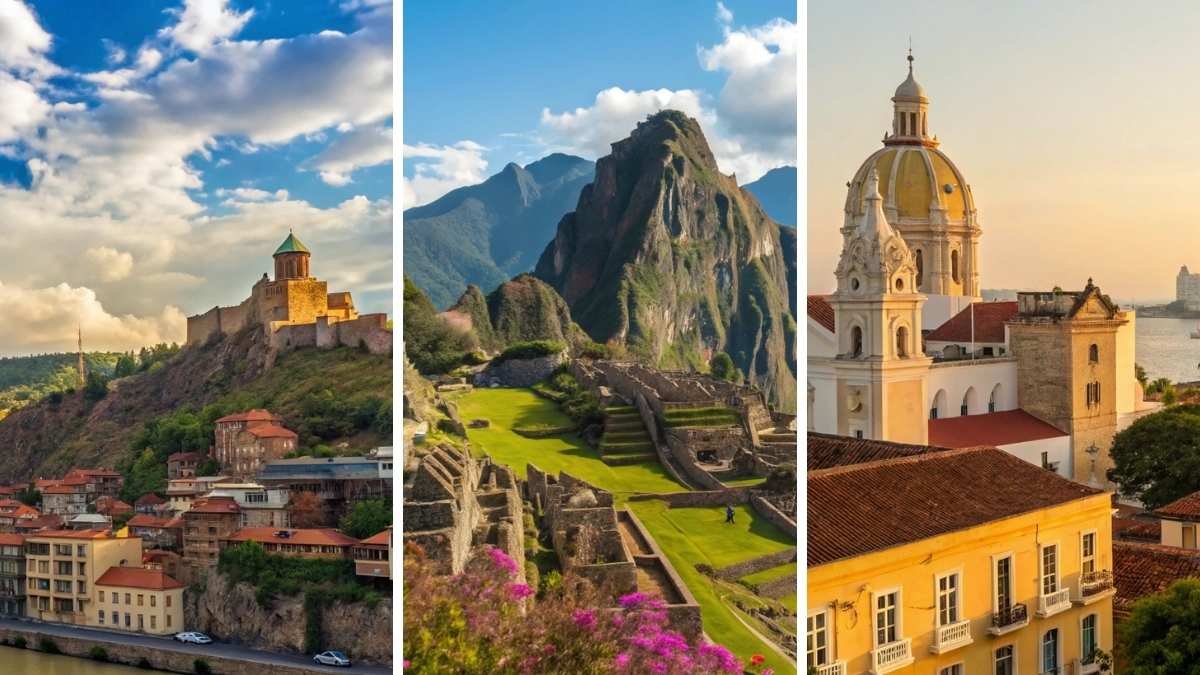
Retirement shouldn’t feel like tightening your belt—it should feel like finally breathing easy. If your Social Security check doesn’t seem to stretch far enough at home, you’re not alone.
But what if you could do all that on the same modest income — and also dine on fresh seafood, face the ocean, receive private health care, and have someone else do your cleaning? This isn’t about getting by — it’s about living very well in places where your dollars go three times as far.
Whether you crave coastal calm or cultural color, there are places where you can thrive without worry. Let’s take a tour of 15 countries where retirement isn’t just affordable—it’s exciting again.
1. Mexico

For good reason, Mexico is still a retiree favorite—and in 2025, the cost-benefit equation becomes more favorable. Cheap cost of living, warm weather, and close to the U.S. make it a destination for folks to stretch out their Social Security check, and still live like kings and queens. You can expect to rub shoulders with partygoing beach bums in Puerto Vallarta and artists in mountain hideaways like San Miguel de Allende.
The cost of housing is especially impressive. In many areas, you can rent a fully furnished apartment in a walkable neighborhood for under $700/month, and utilities and healthcare costs are a fraction of what they are stateside. Plus, residency is relatively easy to secure, especially for retirees with steady income. With direct flights to most U.S. cities and an established expat community, you won’t feel isolated or disconnected.
Although parts of Mexico indeed require more due diligence on the safety front, retired expats usually report that living in expat-friendly areas is safe and comfortable. The food, the culture, the life pace — it all combines into an equation that seems to have more to do with lifestyle upgrade than with living on the cheap.
Quick Facts:
- Best Months to Visit: November to April (dry season, pleasant temperatures)
- Average Monthly Rent: $500–$800 (1-bedroom in expat areas)
- Healthcare Quality: High in private hospitals, very affordable
- Residency Program: Yes, pensionado visa available
- Bonus: Direct, low-cost flights to the U.S. from most regions
2. Portugal
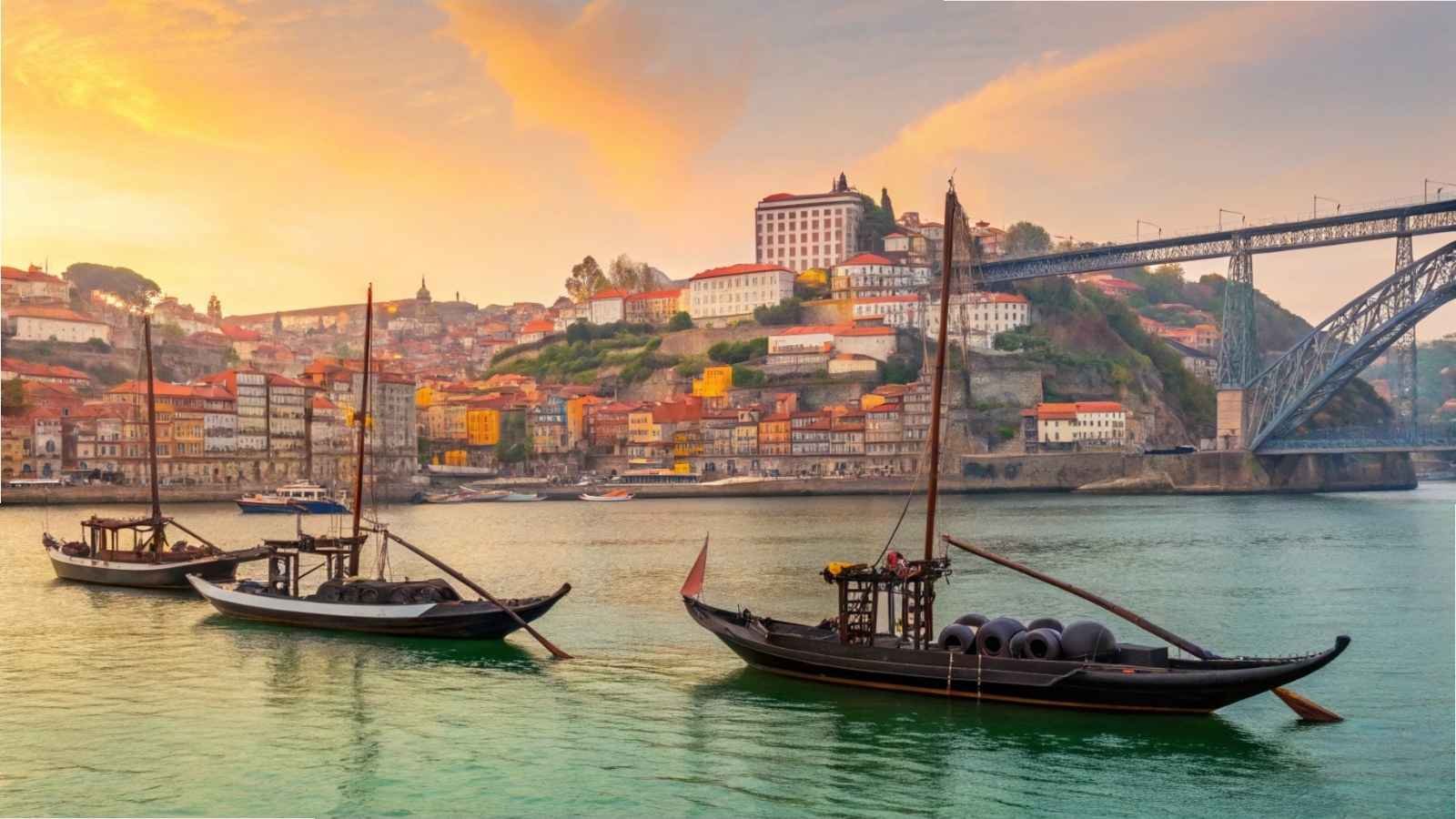
Portugal has carved out a reputation as one of Europe’s most retirement-friendly destinations, and it’s not just hype. From its temperate climate, opposed to the political one of the other Iberian Peninsula country, Spain, to its affordable cost of living and social health care, Portugal punches well above its weight in terms of how much you get for how much you spend. Cities like Lisbon and Porto are more cosmopolitan, while the Algarve is just a straight-up sun-dappled beachy paradise that’s attracted retirees from all corners of the world.
The cost of living in Portugal is about one-third that of the U.S. when it comes to essentials like rent, groceries, and transport. A modest Social Security check goes a long way here. You can easily find coastal apartments for under €800/month, enjoy fresh seafood dinners for under €10, and sip wine that costs less than bottled water.
Healthcare is another strong point. Residents have access to public healthcare that’s either free or extremely affordable. And if you prefer private care, it’s still a fraction of U.S. prices. English is widely spoken in tourist and expat areas, making integration easier than you’d think.
Quick Facts:
- Best Months to Visit: March to June, September to November
- Average Monthly Rent: €500–€850 for a one-bedroom
- Healthcare Quality: Excellent, both public and private
- Residency Program: D7 Visa (income-based) is popular with retirees
- Bonus: High safety ranking and great public transport
3. Costa Rica
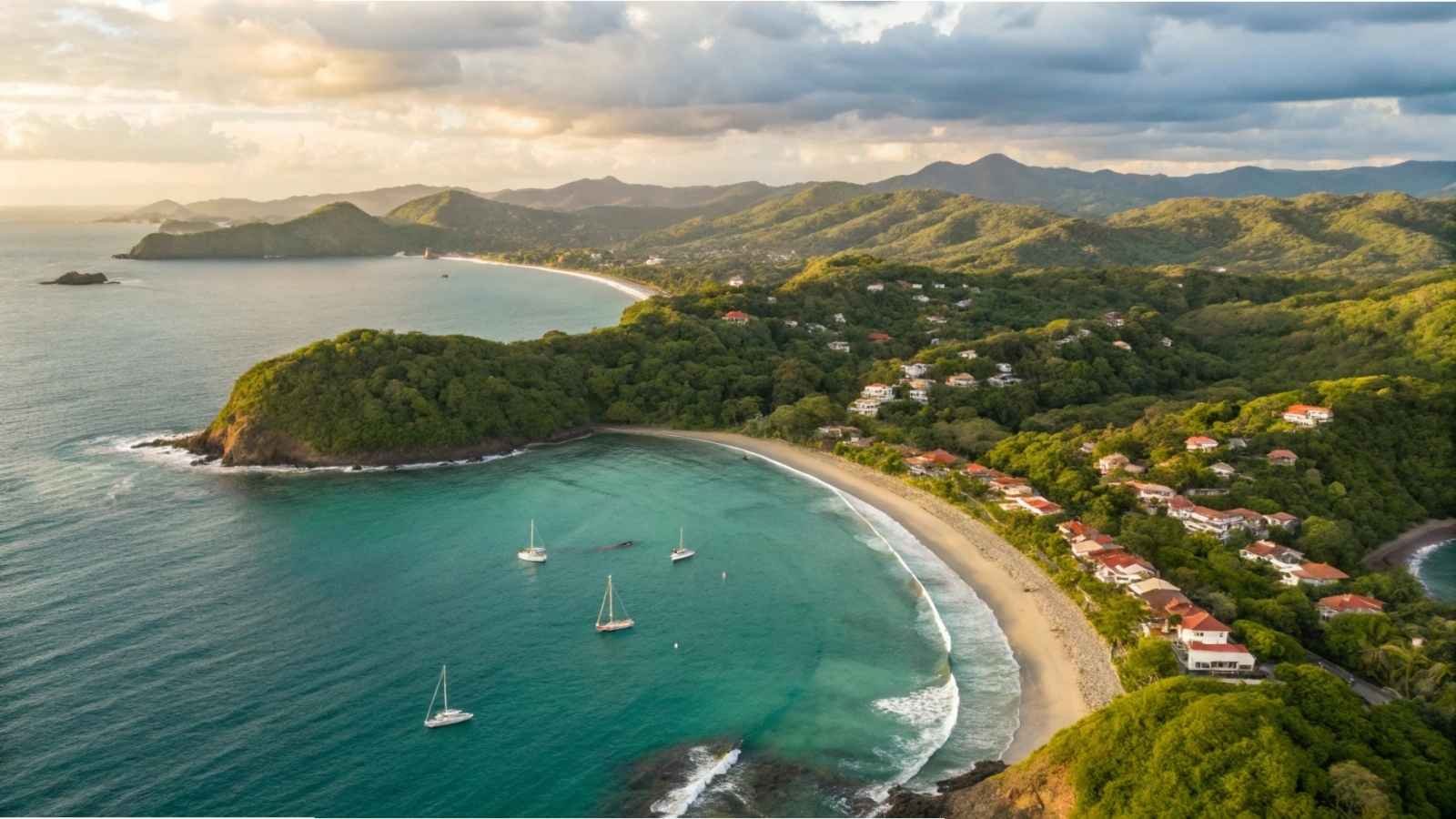
Costa Rica is all about “pura vida” — a saying that means more than hello, it is a way of life. Renowned for its biodiversity, eco-friendly way of life, and stable democracy, Costa Rica is a tropical haven for retirees looking to stretch their dollars without giving up the amenities of modern life. It is also one of Central America’s most secure countries.
What makes Costa Rica particularly appealing is its well-developed healthcare system, which includes both public and private options. Retirees can buy into the public healthcare system for a small monthly fee based on income, while private care is available at a steep discount compared to the U.S. Many doctors are U.S.-trained, and English is often spoken in clinics catering to expats.
But beyond the data, Costa Rica is a paradise for nature lovers. With rainforests and volcanoes, pristine beaches and biodiverse rivers, it is somewhere where retirement seems to feel more like an extended vacation, with an abundance of yoga studios, organic markets, and coffee farms thrown in for good measure.
Quick Facts:
- Best Months to Visit: December to April (dry season)
- Average Monthly Rent: $500–$900 in popular expat towns
- Healthcare Quality: Excellent, with a well-rated public system
- Residency Program: Pensionado program requires $1,000/month income
- Bonus: Strong environmental protections and natural beauty
4. Thailand

Thailand provides what is generally considered one of the least expensive and most exotic retirement options on the planet. If your idea of tropical paradise comes with world-class street food, rich culture, and warm hospitality (on a budget), then it’s already on the map, and it’s called Thailand. Cities such as Chiang Mai have turned into magnets for retirees hoping to live reasonably on as little as $1,200 a month.
Rent is incredibly low; you can find modern apartments for $300–$500/month, and even luxury high-rises with pools for under $1,000. Food is another area where you’ll save—meals at local eateries cost just a few dollars. And the medical tourism industry here is booming for a reason: private hospitals are top-notch, English-speaking, and a fraction of U.S. prices.
It is a bit harder to be a vagabond in the country, but when you make it work, it is possible to have a very rich lifestyle. There’s also a long-stay retirement visa that’s easy to get if you have the required income or savings.
Quick Facts:
- Best Months to Visit: November to February (cool, dry season)
- Average Monthly Rent: $300–$600 (1-bedroom in Chiang Mai or Hua Hin)
- Healthcare Quality: Excellent private healthcare at low prices
- Residency Program: Retirement visa available for 50+ with income/savings
- Bonus: Warm, welcoming culture and fantastic food
5. Panama
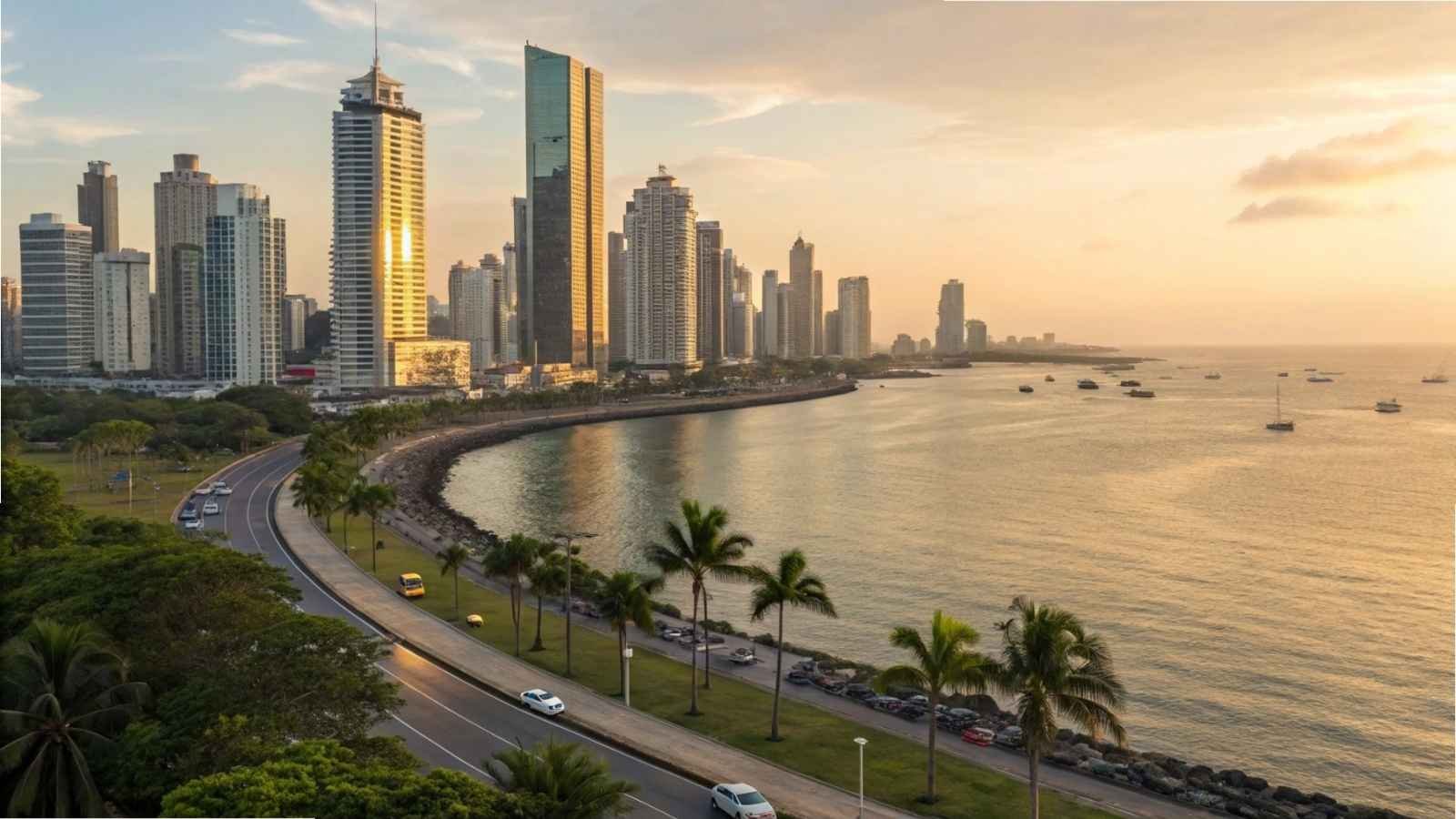
Panama offers modern infrastructure with Caribbean flair and is one of the most retiree-friendly places in the world. With its U.S. dollar-based economy, it’s extremely convenient for Americans to keep their wallet here, without fretting about currency exchange rates. And, with a pensionado visa that entitles you to discounts on everything from health care to the price of a meal somewhere, your income from Social Security goes much further.
Cities like Boquete and David offer cool highland climates and close-knit expat communities, while Panama City delivers more urban amenities and direct flights to the U.S. You’ll find high-speed internet, modern shopping centers, and great roads—amenities that often surprise newcomers.
The best part? Panama’s pensionado visa program is one of the best in the world. Not only does it require a low monthly income threshold (just $1,000/month), but it also gives you access to 25–50% discounts on entertainment, travel, utilities, and healthcare.
Quick Facts:
- Best Months to Visit: December to March (dry season)
- Average Monthly Rent: $600–$900 in expat areas
- Healthcare Quality: High quality in private hospitals
- Residency Program: Pensionado visa with income proof
- Bonus: U.S. dollar currency and excellent expat support networks
6. Ecuador

A gem that flies under the radar often, Ecuador may be one of the best three-for-the-price-of-one places to be, but savvy retirees know that it more than punches above its weight. Tucked into the Andes with mountains, beaches, and rainforest all within reach, it offers one of the most varied landscapes in Latin America — without the high price tag. Places like Cuenca, with cobblestone streets and colonial ambience, have become retirement meccas, and for good reason.
Between $1,000 and $1,500 a month of Social Security can cover rent, food, healthcare, and even some travel. Rent Walking up to the withdrawal counter with just $10 is not uncommon, and housing is particularly good value—you could rent a pleasant, modern apartment in Cuenca or Loja for around $400–$600 per month. Even better, Ecuador functions on the U.S. dollar, meaning you won’t lose money to exchanges.
Medicine is another area of bright hopes. Expats can purchase into the national health insurance system for as little as $80 a month and receive top-shelf care at private clinics for reasonable rates. Toss in spring-like weather all year and a welcoming local culture, and you have a recipe for a low-stress, high-reward retirement.
Quick Facts:
- Best Months to Visit: June to September (dry season in the highlands)
- Average Monthly Rent: $400–$600 in cities like Cuenca
- Healthcare Quality: Strong public and private options
- Residency Program: Pensioner visa with $1,275/month income requirement (2025)
- Bonus: U.S. dollar economy and a consistent spring-like climate
7. Colombia

Colombia has completely turned around its image in the world, and retirees are beginning to get word of it. Places like Medellín now have thriving expat scenes, mild climates, and an impossibly cheap cost of living. Medellín is even called “The City of Eternal Spring” because the temperature there is ideal all year long.
Retirees can live quite comfortably on about $1,200 a month. The rent on today’s apartments ranges from $400 to $700, food is inexpensive, and domestic help is reasonable. Medellín, the capital, Bogotá, and the beach city of Santa Marta both come from vastly different lifestyles – city culture or beach culture.
Colombia also presents top-tier private healthcare, which frequently leads in Latin America. The public health system is open to the public, and foreigners may register upon obtaining residence. Factor in bargain basement internal flights, affable locals, and a dynamic culture, and Colombia stacks up as a very appealing proposition for retirees on a modest income.
Quick Facts:
- Best Months to Visit: December to March and July to August
- Average Monthly Rent: $400–$700 in cities like Medellín
- Healthcare Quality: Excellent in urban centers
- Residency Program: Pensionado visa with ~$950/month income requirement
- Bonus: Vibrant cities, low prices, and direct flights from the U.S.
8. Vietnam

If you’re willing to travel a little farther afield, you really can’t beat Vietnam. Home to ancient temples, busy markets, and quiet beaches, Vietnam has long been a traveler’s paradise, an excellent destination for retired adventurers. Towns like Da Nang, Hoi An, and Hanoi have a mix of affordability, culture, and modernity.
Your Social Security check will likely cover more than everything here. A one-bedroom apartment might cost $250–$500/month, and dining out rarely costs more than $3–$5 per meal. Even services that are considered luxury on this side of the Atlantic — a massage, house cleaning, or gym membership — are ultra-affordable. That kind of freedom with your budget will allow you to live not just cheaper, but better.
Healthcare in Vietnam is surprisingly good in larger cities, where you’ll find international hospitals staffed by English-speaking doctors. While there’s no specific retirement visa yet, many retirees stay long-term through business or investor visas, or by simply doing regular visa runs.
Quick Facts:
- Best Months to Visit: February to April, and October to December
- Average Monthly Rent: $250–$500 in cities like Da Nang
- Healthcare Quality: Excellent in private international hospitals
- Residency Program: No dedicated retirement visa, but other long-stay options
- Bonus: Extremely low daily expenses and rich cultural experiences
9. Philippines
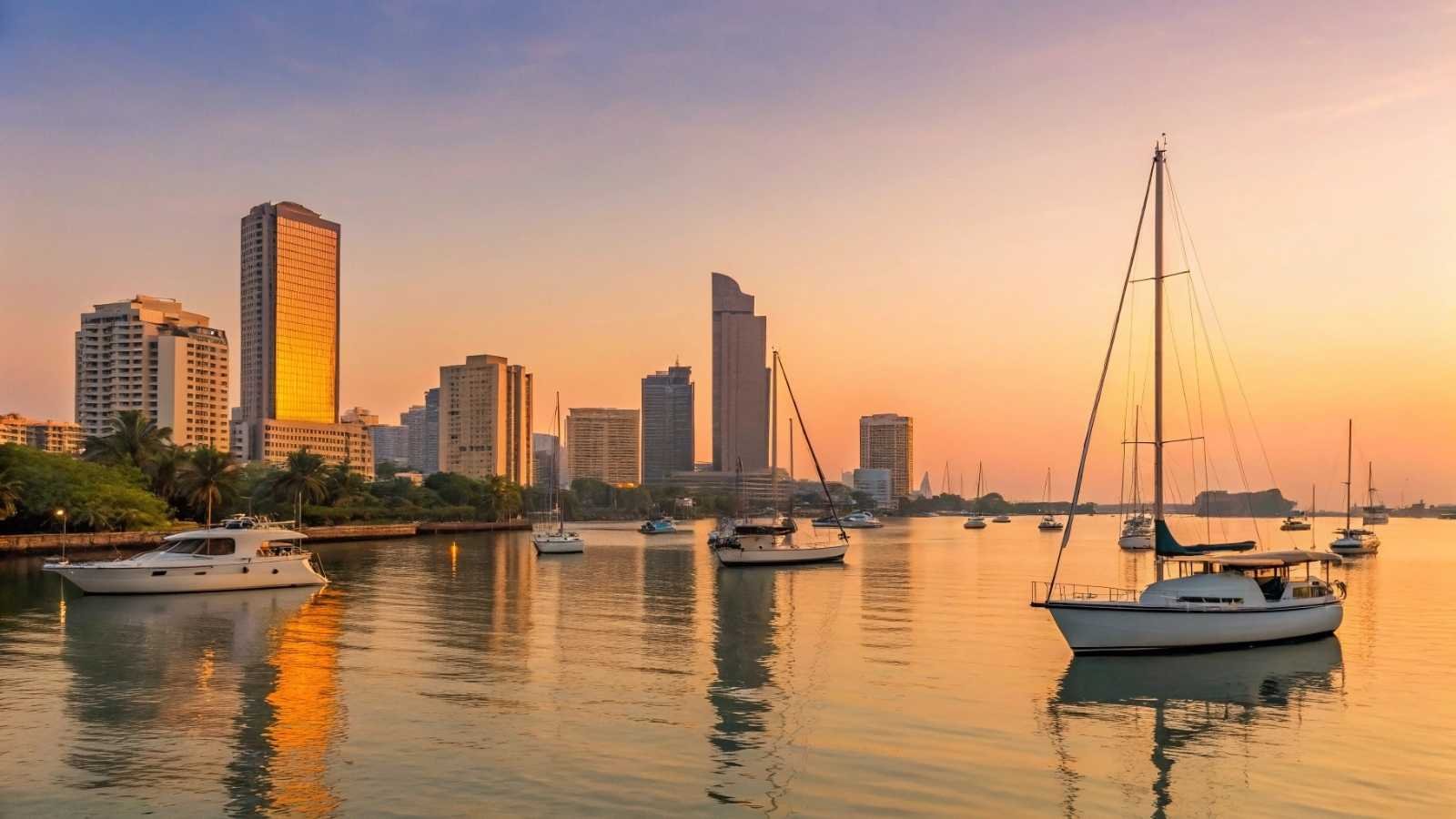
The Philippines is an obvious destination for retired Americans, Canadians, and Australians who visit in large numbers. With its tropical allure and English-speaking residents, the Philippines is a no-brainer for U.S., Canadian, and Australian retirees. One of the world’s most populous countries, the archipelagic Philippines has over 7,000 islands to choose from, be it lively cities like Cebu or Davao, or serene beach towns like Dumaguete (an expat rising star here).
What sets the Philippines apart is how easy it is to live well on a small income. Monthly expenses, including rent, can stay under $1,000, with plenty of breathing room for extras. Healthcare is modern and inexpensive, and you’ll find many U.S.-trained doctors and nurses in urban hospitals.
Perhaps the biggest bonus? The Special Resident Retiree’s Visa (SRRV). It’s one of the world’s most flexible retirement visas, with low income thresholds and built-in perks like duty-free importation and access to the national healthcare system. It’s the kind of place where your dollar doesn’t just stretch—it thrives.
Quick Facts:
- Best Months to Visit: December to May (dry season)
- Average Monthly Rent: $300–$600 in most expat areas
- Healthcare Quality: Good in cities, with English-speaking staff
- Residency Program: SRRV with minimal income or deposit requirement
- Bonus: English is widely spoken, and the culture is very Western-friendly
10. Nicaragua
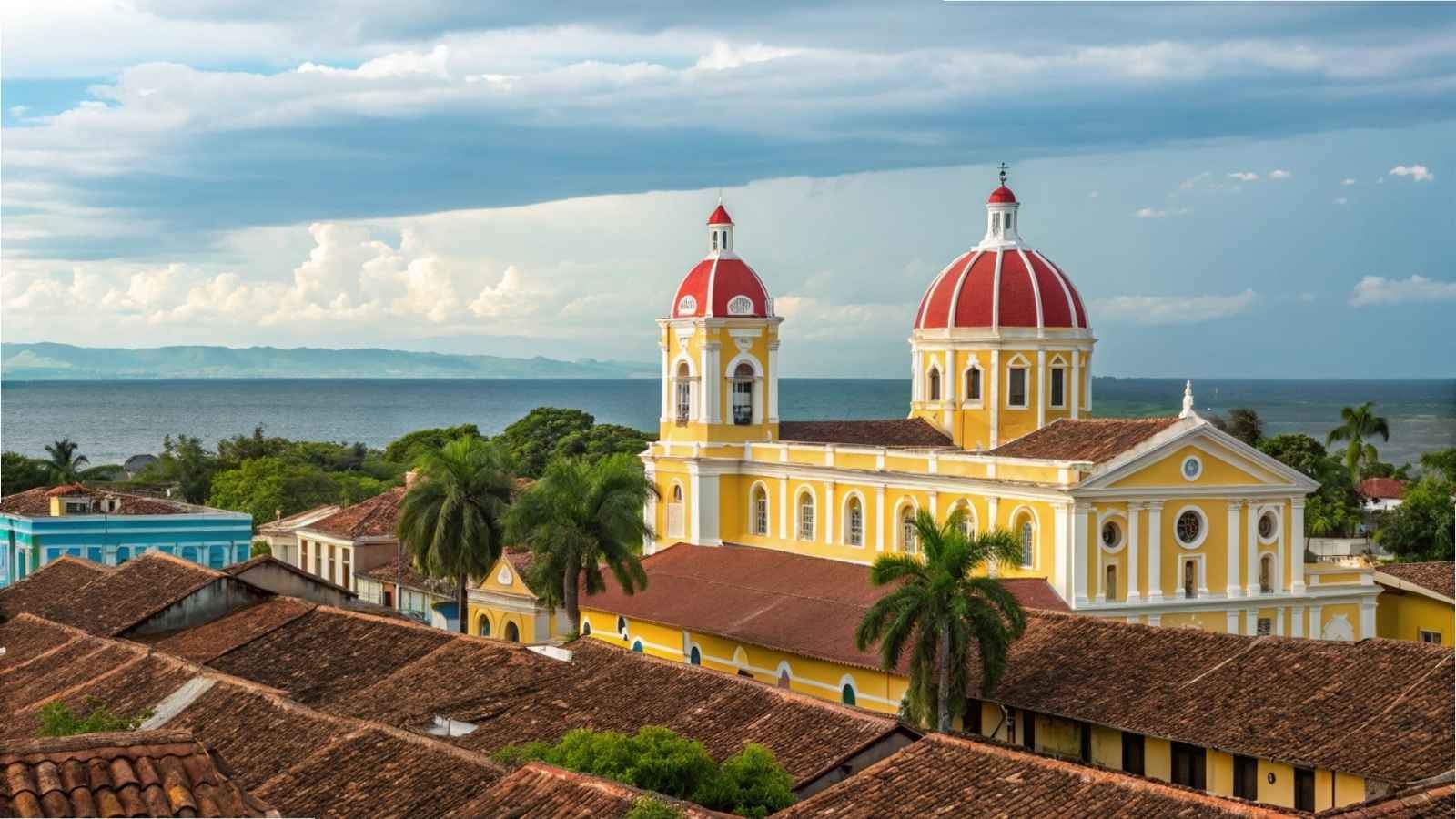
Nicaragua is for the off-the-beaten-path retiree who wants raw beauty, warm communities, and ultra-low costs. Often compared to what Costa Rica was 30 years ago, Nicaragua offers beach towns, mountain villages, and colonial cities like Granada—all at a fraction of the price.
Rent here is shockingly cheap, often under $300/month for comfortable housing. You can enjoy farm-fresh produce, meals for a couple of bucks, and high-quality local coffee that costs less than a bottle of water. It’s not luxury, but it is authentic and deeply affordable.
The government offers a retiree residency program for those with just $600/month in income. And though healthcare lags behind that of some neighboring countries, private clinics in cities like Managua are getting better. Nicaragua is perfect for those who prefer simplicity, nature, and community to glitz and glam.
Quick Facts:
- Best Months to Visit: November to April (dry season)
- Average Monthly Rent: $250–$400 in most towns
- Healthcare Quality: Basic public care, improving private options
- Residency Program: Yes, with $600/month income requirement
- Bonus: Very low cost of living and rich natural beauty
11. Malaysia
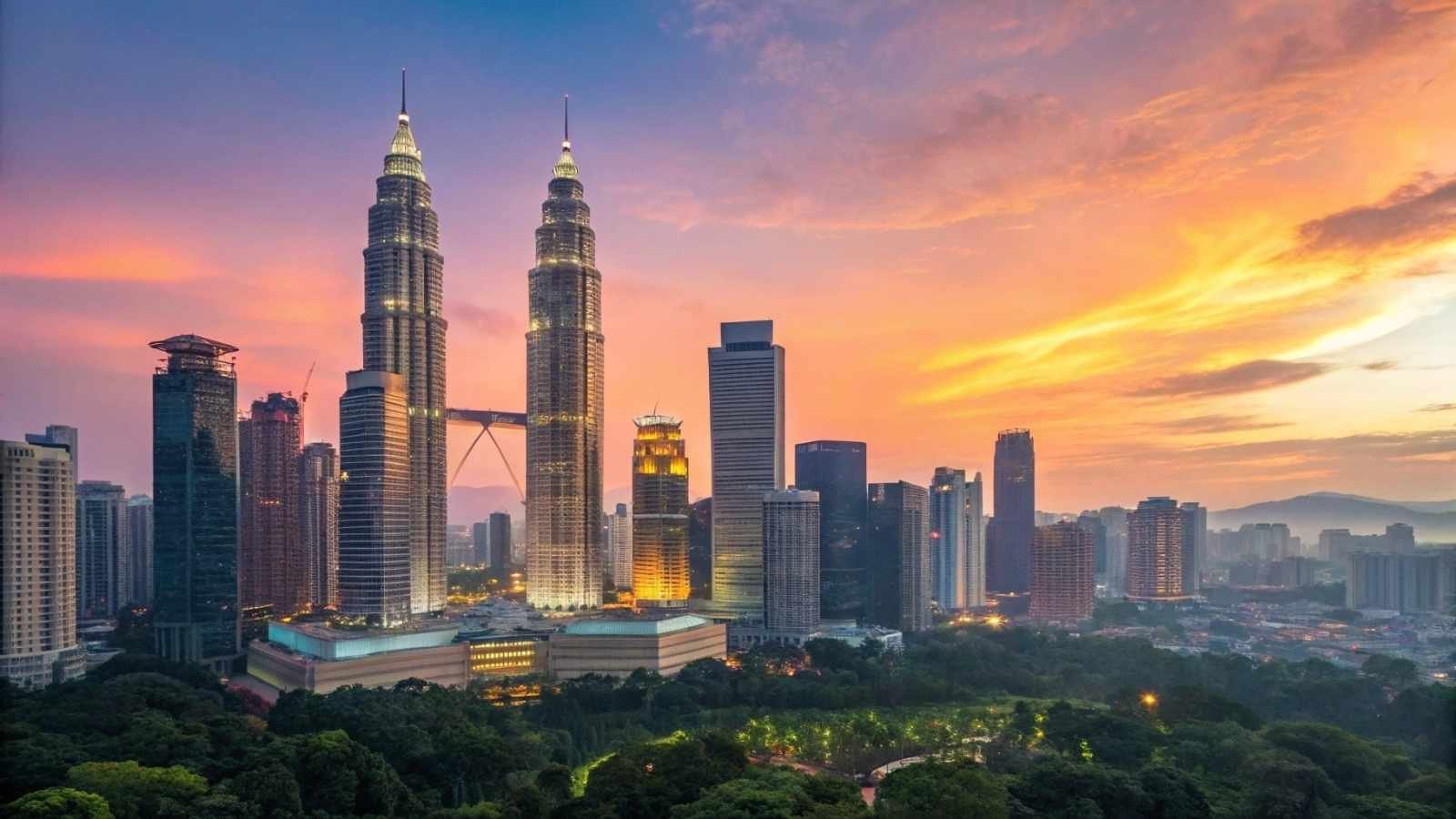
Malaysia is where cosmopolitan life and wild nature coexist—and at shockingly low prices. Whether you’re strolling through the sleek malls of Kuala Lumpur or sipping tea in the Cameron Highlands, you’ll find modern infrastructure, high-speed internet, and international cuisine… all on a Social Security budget.
The country has a world-class healthcare system, especially in large cities. Expats from all over sing the praises of Malaysia’s private hospitals, which are of quality rivaling those in the West and cost a fraction (about 70% to 80% less than in the U.S). English is spoken widely, so daily life and medical appointments are easy and stress-free.
If you want to live in the city centre, renting a furnished apartment with a pool and a gym will cost approximately $400–$700/month. Even beachfront condos on islands like Penang or Langkawi are affordable. The Malaysia My Second Home (MM2H) policy was overhauled in 2024 and is still available to people looking for a longer-term base.
Quick Facts:
- Best Months to Visit: December to March (drier and cooler in most regions)
- Average Monthly Rent: $400–$700 for urban apartments
- Healthcare Quality: Outstanding, with strong medical tourism
- Residency Program: MM2H available with minimum financial requirements
- Bonus: English is widely spoken, and the cost of living is very low for Southeast Asia
12. Peru

But if you yearn for something a little more historic, a little more cultural, and a little more coastal, you might find that Peru, as it turns out, has a few surprises up its capacious sleeve. Yes, it’s home to Machu Picchu, but there’s so much more here than bucket-list ruins. Cities like Arequipa and Trujillo boast beautiful colonial architecture, lively street life, and, yes, monthly living expenses well below $1,200 all in.
What makes Peru shine is its diversity. Want a coastal retirement with fresh seafood? Try Lima’s seaside districts. Prefer crisp air and art galleries? Look no further than Cusco or Arequipa. Public transportation is relatively cheap, and with domestic flights, it’s not hard on the wallet to see the country’s diverse geography..
Health care is adequate and improving, especially in Lima and major towns, where private hospitals are affordable and modern. (And if you’re a foody, excellent news for you: Peru arguably has the best food scene in Latin America, without an outrageous food bill in sight.)
Quick Facts:
- Best Months to Visit: May to October (dry season in the Andes)
- Average Monthly Rent: $300–$500 in regional cities
- Healthcare Quality: Good in cities, improving overall
- Residency Program: Rentista visa for those with fixed income
- Bonus: Incredible cultural richness and world-class cuisine on a shoestring
13. Belize
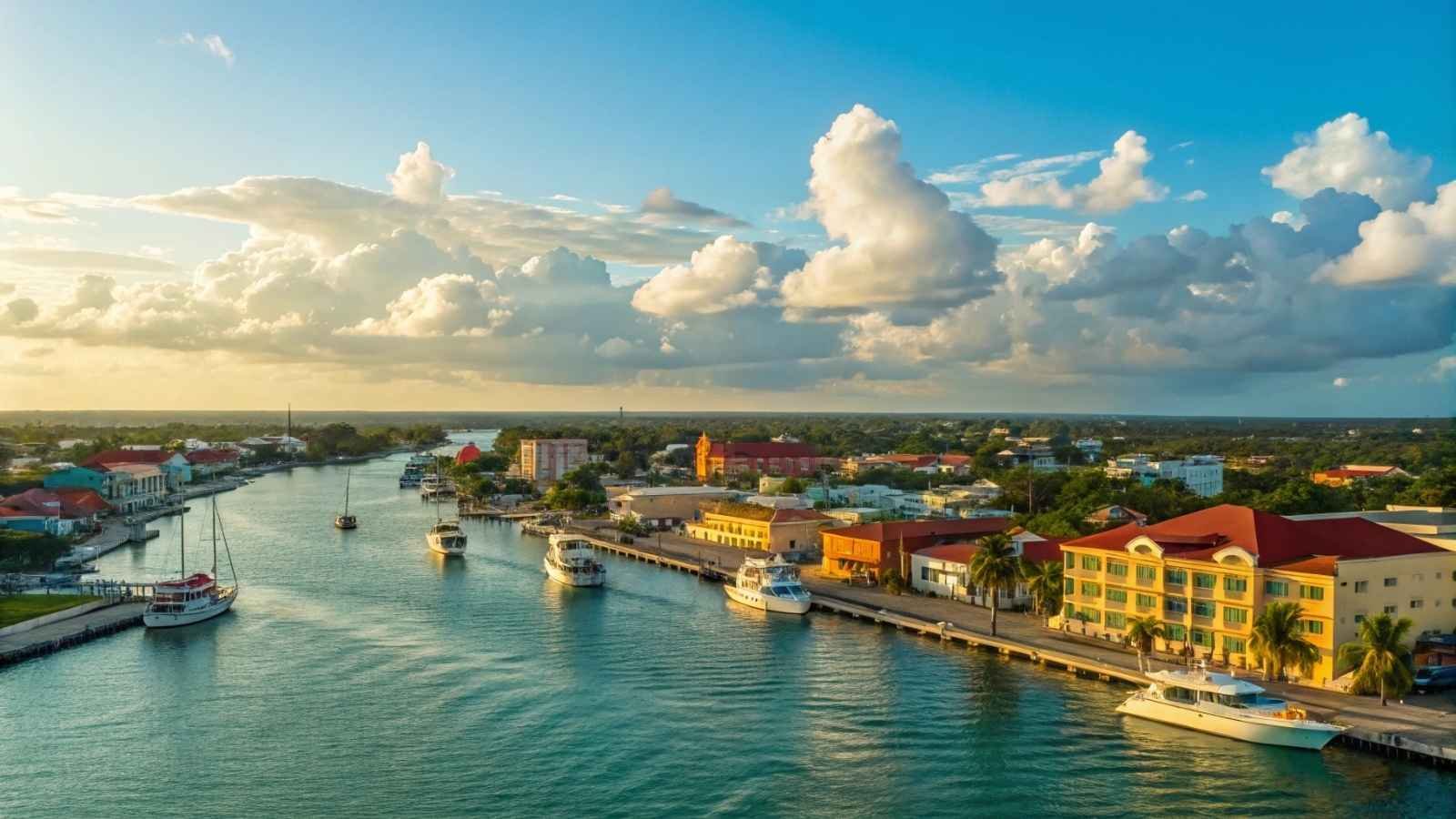
Belize is all about easy island living with English on the menu. It’s the only country in Central America where English is the official language, so if language barriers give you pause, this could be the stress-free retirement you’ve been hoping for. And yes, it’s home to some of the Caribbean’s most accessible beaches.
It’s the QRP (Qualified Retired Persons) Program that makes Belize so appealing. You only need to have $2,000/month income for proof, and you get residency, a break on taxes, and you can even bring a car into the country free of import duty. Every day living is also inexpensive if you avoid tourist areas and stick to local food and accommodations.
And sure, it may not have the level of infrastructure of, say, Portugal or Malaysia, but there’s a charming, rustic quality here. From the mellow island of Caye Caulker to the jungle sanctuaries in San Ignacio, Belize comes with peace, sun, and slow living.
Quick Facts:
- Best Months to Visit: December to May (dry season)
- Average Monthly Rent: $500–$800 outside main tourist hubs
- Healthcare Quality: Basic public care, better private clinics
- Residency Program: QRP program with income verification
- Bonus: Caribbean coast + English-speaking = seamless transition
14. Morocco

Morocco provides a fresh and different option for retirees looking for an old-world experience on a new world budget. You’ll find history, affordability, and a cost of living that makes a dollar go further than you could ever imagine in North Africa — from the sun-drenched souks of Marrakech to the breezy coastal city of Essaouira.
Rent, food, transportation, maybe a few extras, can all be had on a monthly income of, say, $1,200–$1,400. “Moroccan food — it’s saffron, cumin, cinnamon — it’s cheap and it’s everywhere. Rents are modest; in smaller towns, you can find a riad-style apartment with a courtyard for under $500 a month.
The official languages are Arabic and French, but English is developing in expat-heavy areas. Healthcare is spotty — best in cities like Casablanca and Rabat, where private clinics provide service at a fraction of U.S. prices. And the cultural experience? Luxurious and rich without being dense.
Quick Facts:
- Best Months to Visit: March to May, and September to November
- Average Monthly Rent: $350–$600 in mid-sized cities
- Healthcare Quality: Decent in cities, especially private care
- Residency Program: Long-stay visa possible, though less formalized
- Bonus: Mediterranean lifestyle with North African spice and charm
15. Georgia (the country)
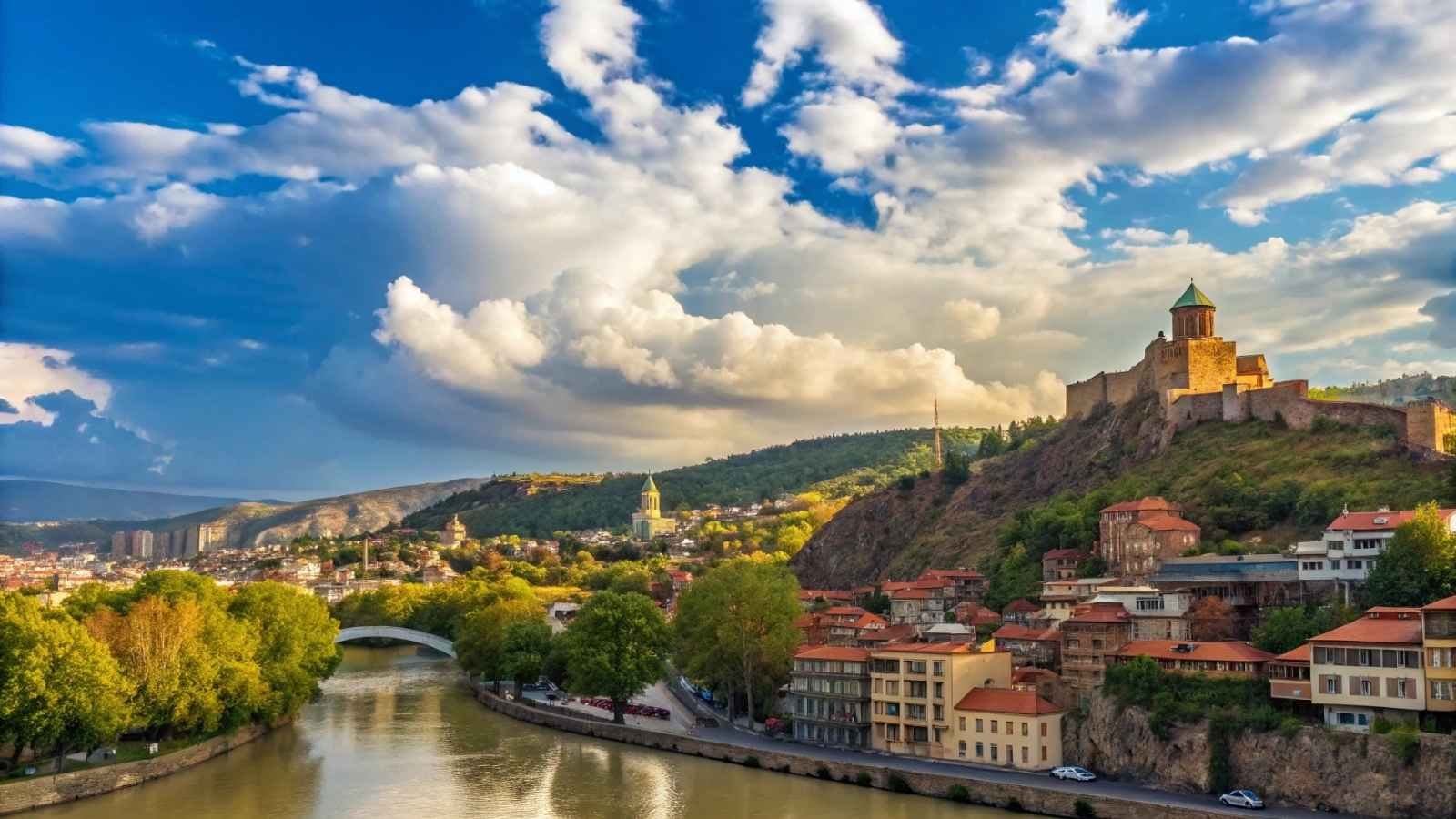
Georgia — the one on the Black Sea, not the American state — is among the most underappreciated retirement destinations on the globe. Safe, beautiful, and stupidly cheap, it’s no wonder the country has been low-key winning the hearts of expats looking to stretch their Social Security check like it’s Silly Putty.
The capital, Tbilisi, is filled with a riot of color and culture, cobblestone streets and wine bars, and art-filled courtyards. You can rent in the city: a furnished apartment for $250–$450 /mo, eat well for less than $10/day, and get free healthcare for citizens, very low costs in small private clinics for foreigners.
One of Georgia’s greatest attractions is its visa policy — most nationalities get a 365-day visa-free. That’s unusual in the market, and it makes moving a cinch, without any legal headaches. It might be a little scrappy, but it’s charming to its core, full of history, and home to stunning views.
Quick Facts:
- Best Months to Visit: May to October (warm and dry)
- Average Monthly Rent: $250–$450 in central Tbilisi
- Healthcare Quality: Good in cities, very affordable
- Residency Program: Optional after a 1-year stay, with very relaxed rules
- Bonus: One-year visa-free stay for most Western passport holders






